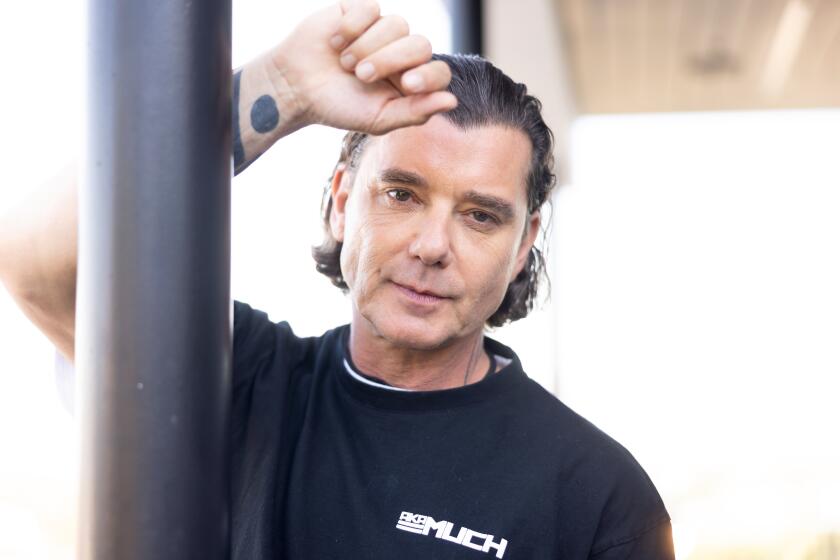A new tone in San Francisco
- Share via
SAN FRANCISCO -- If you step on it, somehow manage to avoid traffic, take no rest stops and remain unintimidated by big rigs, you can drive from the Music Center in downtown Los Angeles to the War Memorial Opera House here in less than six hours. Flying, you might make slightly better time, door to door, but you can never count on it.
All this means that San Francisco Opera and Los Angeles Opera are not exactly neighbors, even though the companies keep a competitive eye on each other. It also means that the new production of Wagner’s “Tannhäuser” unveiled here last week is a peculiar representation for a new regime at San Francisco Opera.
David Gockley, who began as the company’s general manager last season, is giving San Francisco Opera a new tone after the edgy, theatrically provocative, socially and politically relevant, intellectual approach of his predecessor, Pamela Rosenberg, didn’t sit well with the city’s moneyed opera hounds or its fanatic canary fanciers.
Gockley has proposed a middle way, less Eurocentric, less artistically formidable but still timely. “Tannhäuser,” which I saw Sunday afternoon in its second performance, is the first production fully planned by him. But, at least superficially, it seemed to follow L.A.’s lead.
Last season, L.A.’s “Tannhäuser” -- the first new production conducted by a new music director, James Conlon -- starred Peter Seiffert as the troubadour knight Tannhäuser and Petra Maria Schnitzer as his beloved, Elisabeth, and was sexed up by a flashy British director, Ian Judge. Seiffert and Schnitzer are also San Francisco’s choice. The gaudy Brit up north is Graham Vick. In fact, though, the two productions have little in common.
If this “Tannhäuser” is indicative of Gockley’s intentions for San Francisco, he is returning the company to a focus on singing over theater. Nearly everyone involved with the production -- including the director, lighting and production designers, choreographer and large cast (with the exception of three very minor roles) -- was making his or her company debut. Longtime music director Donald Runnicles conducted, but this is his last season.
There was beauty to be found Sunday in the lush orchestral playing in the pit, in the voices onstage. But it was a bland beauty, devoid of drama. “Tannhäuser” begins in Venusberg, where our hero soon tires of the sexually voracious Venus. He returns to uptight medieval society and naive Elisabeth. He seeks redemption, but his peers and the pope are unsympathetic. It takes the sacrifice of Elisabeth to produce a deathbed miracle.
Everything in Vick’s “Tannhäuser” takes place in a simple structure with dirt floors and a tree in the middle. A big silver harp gets pushed around in the dirt quite a bit. Fire pops up from the ground when a little visual liveliness is needed. A white horse happens in. The designer of the sets and traditional troubadour garb was Paul Brown.
The opening orgy is handled by dancers choreographed by Ron Howell. Jittery figures grope, twitch, stand on their hands, quickly couple and uncouple. The men are bare-chested. The woman have an odd habit of lifting their long negligees over their heads. A clingy Venus and a tired Tannhäuser do their business inside a circle of fire. Petra Lang, who has a voluptuous voice, could be a highly sensual Venus if given the opportunity.
In L.A., Seiffert took some time to warm up, at least on the first night. Sunday he was clarion all the time. But in L.A., he was also an amusing and touching lost soul -- an over-the hill, mustachioed crooner. For Vick, he became just another pudgy heldentenor, standing and singing. Schnitzer, radiant in L.A. as a kind of Princess Diana, radiated less in Vick’s conventional girlish innocence-to-experience approach. Still, she sang very nicely if she no longer dominated the stage. James Rutherford was a pleasant Wolfram; when he sang to the evening star, he looked up at a skylight.
To Gockley’s credit, San Francisco Opera’s current season is more imaginative than L.A.’s. Next month he will offer the premiere of Philip Glass’ “Appomattox.” Other highlights include Robert Lepage’s acclaimed Brussels production of “The Rake’s Progress” and the start of Francesca Zambello’s “Ring.” By June, when Mary Zimmerman’s production of “Lucia di Lammermoor” (which opened the Metropolitan Opera on Monday night) reaches San Francisco, “Tannhäuser” may just be a distant, meaningless memory rather than symbol of a new era. I hope so.
--
More to Read
The biggest entertainment stories
Get our big stories about Hollywood, film, television, music, arts, culture and more right in your inbox as soon as they publish.
You may occasionally receive promotional content from the Los Angeles Times.











